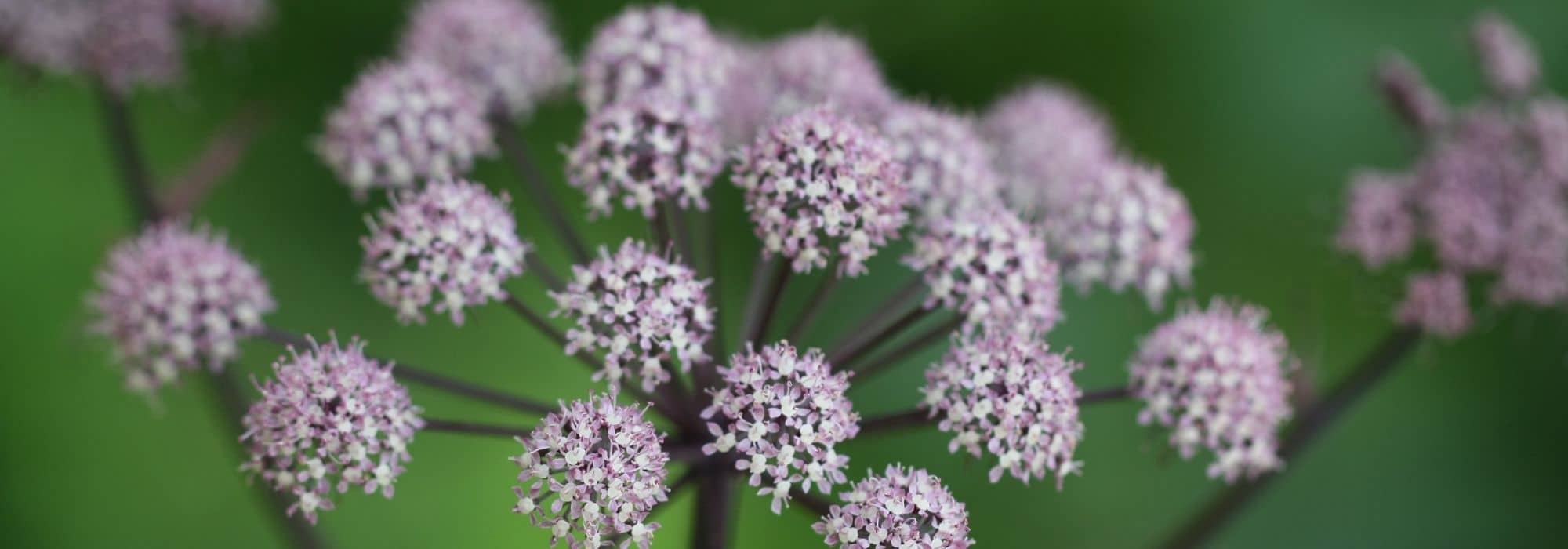
Associate the angelicas
7 inspiring plant combinations for the garden
Contents
Angelica is highly valued in the garden for its tall stems bearing globular and rounded flowers. Its round inflorescences can be white, yellow, greenish, or purple depending on the variety. This beautiful perennial or biennial is grown for both its decorative appearance and its aromatic properties in Angelica officinalis, which is highly sought after in confectionery. The latter is also reputed for its medicinal virtues and used in homeopathy. In the garden, it adds a touch that is both graphic, vertical, and light.
Discover 7 ideas for combining angelica in a garden, vegetable patch, woodland, or by the water’s edge.
In a vegetable garden or an herb garden
Angelica archangelica, also known as Garden Angelica, is the only variety cultivated for its culinary qualities. Its young stems, tender shoots, and roots are used in confectionery, baking and in the production of liqueurs. It is also used in decoctions or infusions for its medicinal properties. Additionally, its inflorescences attract beneficial pollinators to the garden, with their subtle aniseed and musky fragrance.
Whether in the vegetable garden or an herb garden, you can sow Angelica near other large aromatic plants, such as Wormwood, Dill, or Fennel. If you enjoy infusions, plant it near Lemon Balm, Chamomile, Common Vervain, and Mint. Don’t forget Tansy for its repellent properties, which are very useful in the vegetable garden. To complete your herb garden, be sure to add some essentials: a young plant of Oregano, Thyme, Basil, Parsley, and a Rosemary. This will enhance your dishes and delight your taste buds!

Garden Angelica (Angelica archangelica) is cultivated in the vegetable garden for its culinary qualities.
Read also
Making candied angelicaBy the pond's edge
Rustic and easy to grow, angelica particularly enjoys moist soils and will naturally thrive by the water’s edge, even in winter. Its delicate silhouette will beautifully complement other perennials with airy flowering, such as Filipendulas, Astilbes, Epilobes, goat’s beard, and Persicarias. To compete with its tall stems, you can plant some large perennials, such as Ligularias with yellow flowers, bulbs of marsh iris, or in mauve tones, Veronicastrum virginicum ‘Erika’. At the front, you can include some Tradescantias, a Spurge, Siberian Irises, and Hostas for their stunning decorative foliage. As groundcover, you could plant a Lysimachia nummularia or a hardy geranium ‘palustre’ to enhance this relaxing corner.
Discover other Angelica
View all →Available in 2 sizes
Available in 2 sizes
Available in 1 sizes
Available in 1 sizes
Available in 1 sizes
Available in 1 sizes
Available in 1 sizes
Available in 1 sizes
In an English garden
With its tall, light and graphic silhouette, Angelica naturally blends among the iconic plants of English gardens. Its elegant flowering, in pastel or purple, deserves a prominent spot at the back of a mixed-border, in front of the famous English roses and clematis. Its tall, globular and rounded inflorescences will accompany the long floral spikes of foxgloves, lupins, and delphiniums. To play with shapes and colours, add some Phlox paniculata, campanulas, astrantias, hardy geraniums, and hostas for their stunning foliage. For bulbs, plant daylilies, beautiful irises, kniphofias, and alliums. You can sow some annual seeds to bring lightness, such as cosmos, anthemis, and cleomes that will self-seed spontaneously.
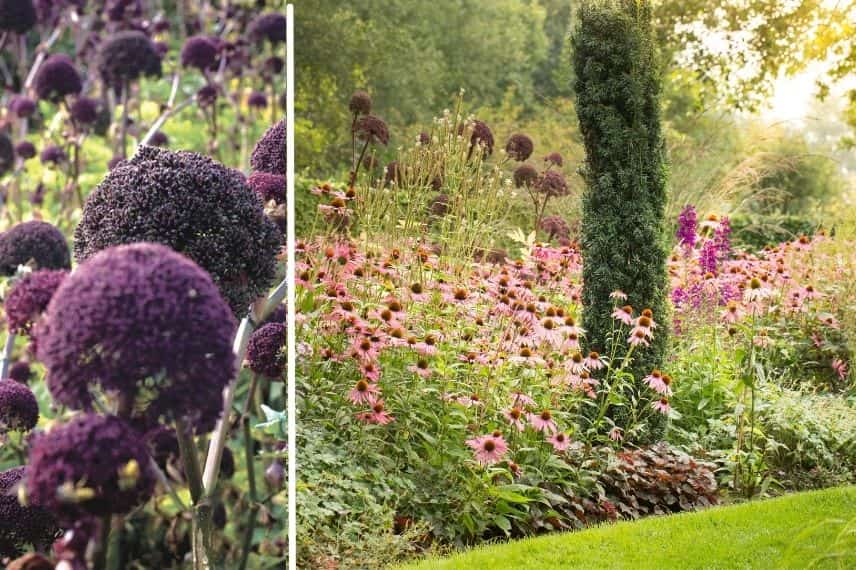
The red Angelica gigas will find its place at the back of a mixed-border
Read also
How to harvest and store Angelica seeds?In a natural garden
With its tall silhouette, both light and airy, Angelica is a reliable choice for natural and rustic gardens where the soil remains consistently moist. Plant it at the back of a large, slightly lush border of summer-flowering perennials, formed of Purple Loosestrife, Agastache, Astrantia, and Echinacea. The tall flowering of Angelica will compete with that of Acanthus, Eupatorium, and Salvia uliginosa. Add a Gypsophila paniculata ‘Bristol Fairy’ to lighten this bucolic scene. Grasses suited to moist soil will add a rustic and wild touch, such as Miscanthus and Common Amour. For a natural effect and a profusion of flowers, you can also sow flower meadow seeds, which include beautiful annuals or biennials, such as Cosmos, Helianthus, Poppies, Centaureas, Calendula, and Achillea.
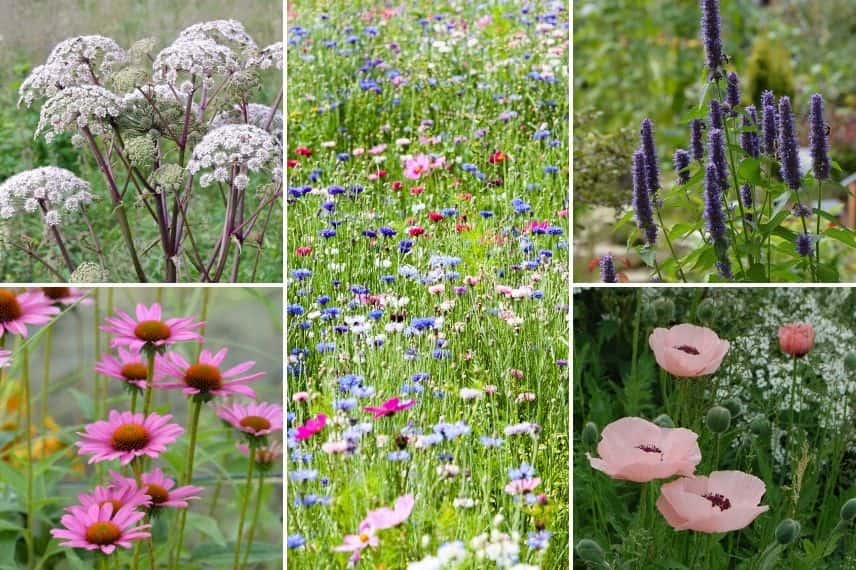
Angelica, Echinacea, annual meadow flowers (cornflowers, cosmos, etc.), Agastache, and Poppy
In woodland
Angelica thrives in rich, consistently moist soil, like that found at the edge of woodlands, where it will bring elegance and lightness. To accompany it, you can plant some woodland perennial plants, such as Anemones, Ligularias, Geranium nodosum, and Astilbes for their airy flowerings. In this soft atmosphere, you can add a slightly wild and lush touch by planting Comfrey, Epimediums, a Persicaria, a Hosta, a Solomon’s Seal, and not forgetting the queen of the woodlands: the fern. If your soil is acidic, you can plant beautiful Rhododendrons or Azaleas. Angelica will beautifully dominate a carpet of perennial groundcover plants, made up of hardy geraniums, Liriopes, some Heucheras, creeping bugles, all enhanced by a few Primroses.

Angelica, Hosta, hardy geraniums, Liriope, and fern
In a white garden
In a white garden, pair white-flowered Angelicas with milky perennials, such as Phlox paniculata ‘Fujiyama’, Astrantia major ‘Super Star’, white-flowered campanulas, Achillea ‘White Beauty’, and Agastache rugosa ‘Alabaster’. A giant umbellifer, the Angelica will compete in height with the magnificent Digitalis purpurea ‘Alba’, white aconite, and Baptisia pendula ‘Alba’. Among shrubs, create romantic displays by placing the Angelica near a Hydrangea paniculata, a mock orange, a viburnum, a Weigela ‘Milk and Honey’, and of course, white-flowered roses.
In a purple and aniseed garden
Angelica gigas is a plant that never goes unnoticed with its large dark purple inflorescences. In a graphic and contemporary garden, pair it with other purple perennials such as Heucheras, Fritillaria persica ‘Adiyaman’, and a Euphorbia amygdaloides ‘purpurea’ with dark foliage but golden yellow flowers. Also plant a black Oriental hellebore and a few bulbs of Parrot tulip ‘Black Parrot’ to start flowering early in winter. For shrubs, install one or two shrubs with dark foliage, such as a Cotinus ‘Grace’ or a Physocarpus.
To avoid a too dark and heavy effect, incorporate plants in anise green tones that will bring brightness and a very contemporary contrast. The Hakonechloa macra ‘Aureola’, box balls, and a Pinus densiflora ‘Jane Kluis’ will form lovely rounded cushions at the base of the Angelica. At the back of the bed, a Hydrangea quercifolia ‘Little Honey’ will attract attention with its oak leaf-shaped golden foliage. Plant a bright groundcover at the edge of the bed, such as Lysimachia nummularia ‘aurea’, to complete this modern garden.
For further reading
- Discover our different varieties of Angelica.
- To learn everything, browse our sheet on Angelica: sowing, planting and care.
- Subscribe!
- Contents































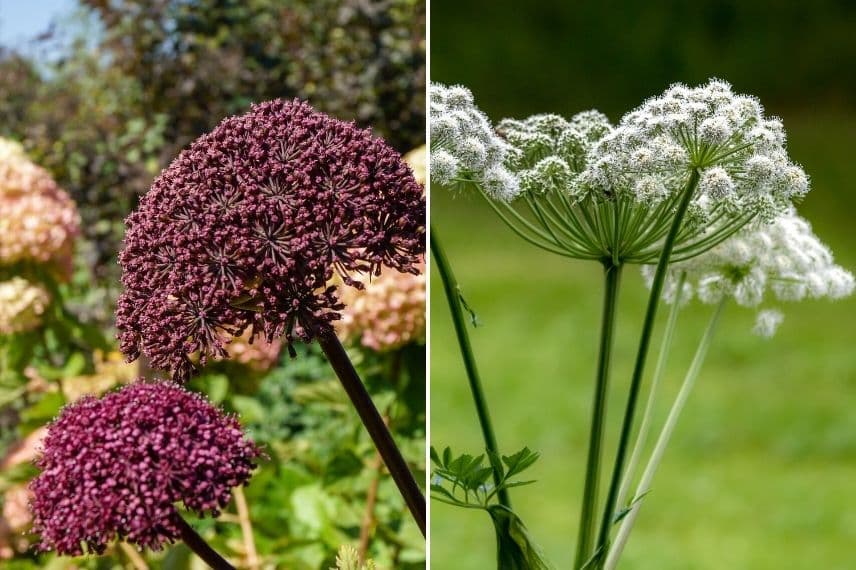

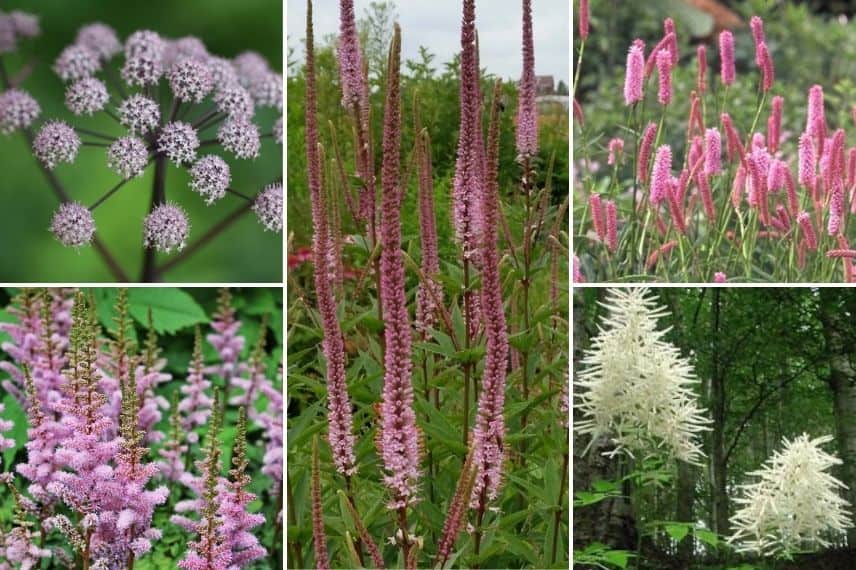

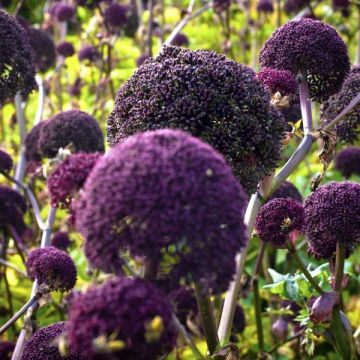
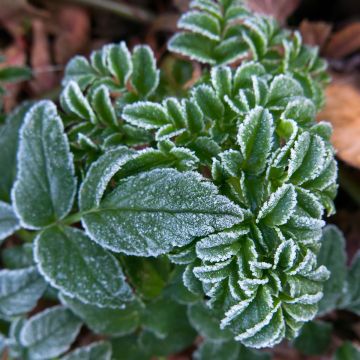
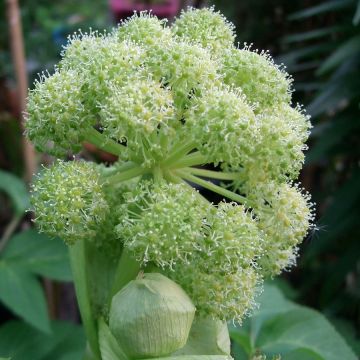

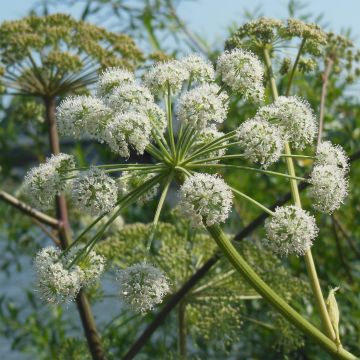

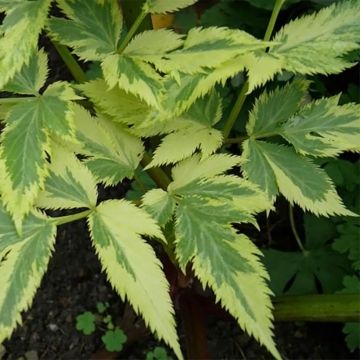


Comments